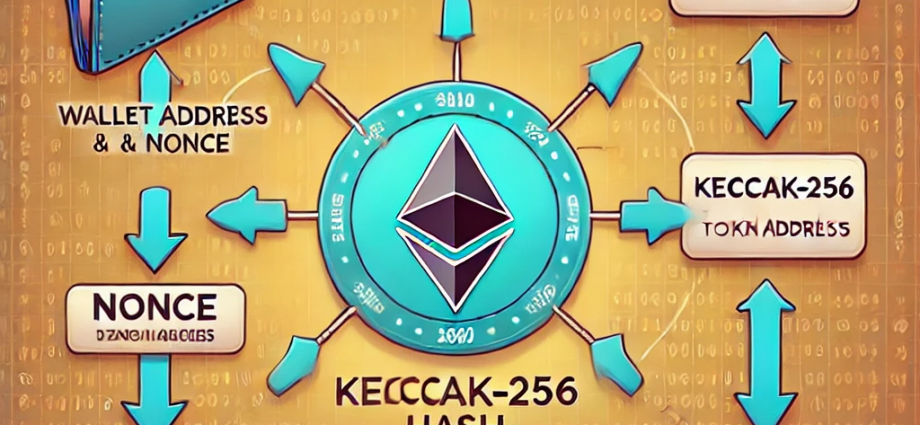When you deploy a token on the Ethereum network (or any Ethereum-compatible network like Binance Smart Chain), the network assigns your token a unique address. But have you ever wondered how this address is actually created?
In this blog, we’ll break down the process of how the Ethereum network generates a contract address in simple terms.
A token address is simply the unique identifier for a smart contract on the Ethereum blockchain. When you deploy a token contract (like an ERC-20 token), the network automatically assigns it an address, similar to how your Ethereum wallet has an address.
This address is where users can interact with your token — whether it’s for buying, selling, or transferring.
Before diving into how the address is created, let’s understand what happens during token deployment:
- You Write a Smart Contract: This could be a token contract, a decentralized application, or anything else. In our case, it’s a token contract.
- You Send a Transaction: You send a special transaction to the blockchain. Unlike a normal transaction where you send ETH to someone, this transaction includes the compiled code of your contract and some additional information.
- The Blockchain Processes the Transaction: The network runs your code, and once it’s verified, it creates a new smart contract. This contract is now live on the blockchain, and it gets assigned a unique address.
Now comes the interesting part — how the blockchain generates your token’s address.
When you deploy a smart contract, the network uses two pieces of information to generate the address:
- Your Wallet Address: This is the Ethereum address from which you are deploying the contract. It’s the same as the address you use to send or receive ETH.
- The Nonce: This is simply a number that represents how many transactions you have sent from your wallet. If it’s your first transaction from this wallet, the nonce is 0. If it’s your tenth transaction, the nonce is 9, and so on.
These two pieces of information — the wallet address and the nonce — are used together to generate the token’s address.
The Ethereum network uses a mathematical process known as a hash function to create the contract address. Specifically, it uses the Keccak-256 hash function (a type of cryptography) to compute the address.
Here’s a simplified version of the formula:
Token Address=Keccak-256 Hash(Wallet Address+Nonce)
In simple terms, the network takes your wallet address, adds your nonce, and runs it through a special function to generate the token address.
Let’s say you have the following details:
- Your wallet address:
0x1234...abcd - The nonce (number of transactions):
5
The blockchain takes these two inputs, runs them through the Keccak-256 hash function, and produces the final token address.
Note: Every time you deploy a new contract from the same wallet, the nonce increases by 1, so each contract will get a unique address.
Even if you deploy the same token contract code multiple times, each contract will have a different address. This is because either the wallet address or the nonce (or both) will be different in each case.
For example:
- Deploying the same contract from different wallets will result in different addresses.
- Deploying multiple contracts from the same wallet will also result in different addresses because the nonce will change each time.
As a developer or user, understanding how token addresses are generated can help you:
- Verify your deployment: You can know in advance what the token address will be if you deploy from a specific wallet and nonce.
- Security and transparency: You’ll understand why no two token contracts can have the same address, ensuring security and uniqueness on the blockchain.
In summary, the token address is generated by combining your wallet address with a counter (nonce) representing how many transactions you’ve made. This information is then processed using a cryptographic hash function (Keccak-256) to generate the unique address that represents your token on the Ethereum network.
So next time you deploy a token or smart contract, you’ll know exactly how the magic happens behind the scenes!


